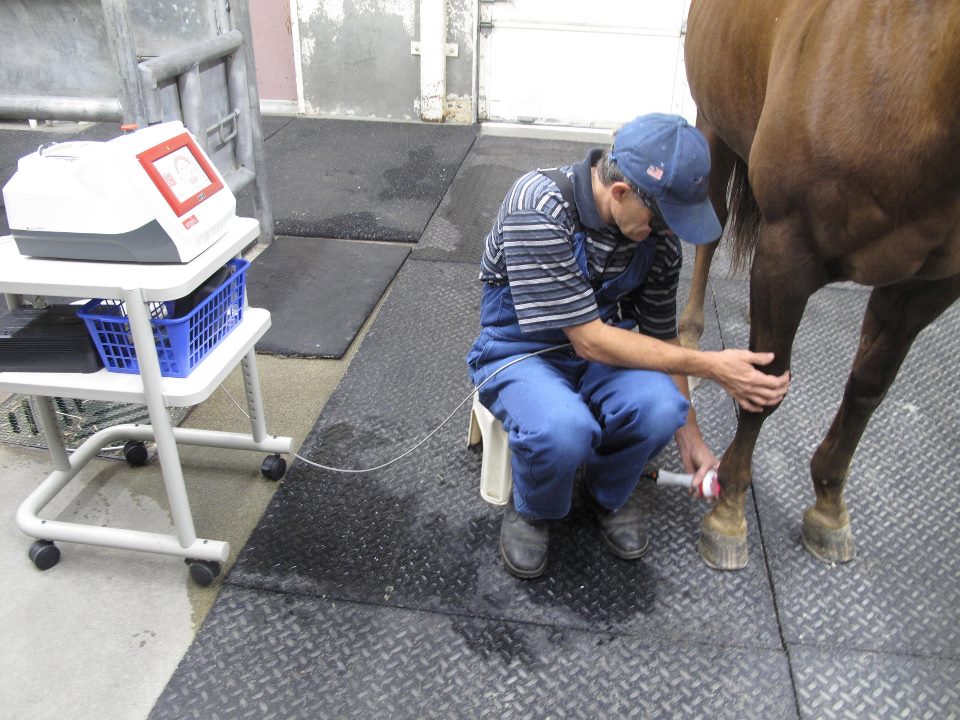Discover the Amazing Benefits of Equine Therapy for Psychological Healing
Discover the Amazing Benefits of Equine Therapy for Psychological Healing
Blog Article
Assessing the Effectiveness of Laser Treatment in Equine Therapy for Injury Rehabilitation
The evaluation of laser therapy's efficiency in equine injury recovery pivots on several variables, consisting of healing time, pain reduction, and tissue regeneration. Scientific researches recommend significant improvements in conditions like tendonitis and osteo arthritis, associated to improved cellular feature and elevated ATP production. Vets frequently observe remarkable outcomes with laser treatment compared to traditional approaches, positioning it as an essential component in equine treatment. The requirement for continuous tracking and tailored treatment plans can not be overemphasized. What particular professional evidence supports these cases, and exactly how do veterinarians execute these methods in method?

Understanding Laser Therapy
Laser treatment has actually come to be a pivotal tool in veterinary medicine, particularly in the treatment of equine conditions. Understood for its non-invasive nature and efficacy, laser therapy involves the application of certain wavelengths of light to boost cells fixing and minimize inflammation. This healing method is progressively favored for its capability to speed up the recovery procedure in horses struggling with a variety of musculoskeletal injuries and chronic problems.
The key mechanism behind laser therapy is its ability to improve cellular functions. In addition, laser treatment advertises vasodilation, improving blood flow and oxygen distribution to broken tissues, hence accelerating recuperation.
In equine medication, laser therapy is especially helpful for conditions such as tendonitis, osteoarthritis, and injury recovery. The method is lauded for its pain-relieving properties, enabling equines to regain flexibility and function much more quickly. Veterinarians additionally appreciate its very little adverse effects contrasted to other treatment modalities, making it a reliable and safe option for equine care.
Just How Laser Treatment Works
To recognize just how laser therapy works, it is vital to explore the communication in between light energy and organic tissues. Laser therapy, additionally referred to as Low-Level Laser Therapy (LLLT) or photobiomodulation, utilizes details wavelengths of light to penetrate cells and stimulate mobile procedures. The device depends upon the absorption of photons by cell chromophores, mainly within the mitochondria, which are important for energy manufacturing.
Upon absorption, these photons set off a collection of biochemical adjustments, improving mitochondrial function and resulting in raised adenosine triphosphate (ATP) production. This surge in ATP speeds up mobile metabolic process, promoting cells repair work and regeneration. In addition, laser therapy regulates inflammatory responses by impacting cytokine degrees and reducing oxidative stress, thus alleviating pain and swelling.
Another considerable element of laser therapy is its function in enhancing microcirculation. The therapy promotes vasodilation, enhancing blood flow and oxygen distribution to broken tissues. This promotes the elimination of cellular debris and sustains the expansion of fibroblasts and collagen synthesis, crucial for injury healing.
Professional Evidence
The efficiency of laser treatment in equine therapy has actually been confirmed through different medical research studies, showcasing its healing potential throughout a series of conditions. Numerous controlled trials and empirical studies have recorded substantial enhancements in tissue repair, pain reduction, and general rehabilitation timelines. For example, a study conducted by Turner et al. (2012) showed that horses treated with low-level laser therapy (LLLT) for ligament injuries showed increased healing contrasted to those getting standard therapies. The research highlighted a marked reduction in inflammation and boosted collagen formation.
In a similar way, research by Johnson and coworkers (2015) concentrated on equine muscle mass injuries, exposing that laser treatment considerably accelerated muscle fiber regrowth and lowered muscle stiffness. These searchings for were substantiated by histological analyses showing better muscle cells company. Additionally, medical assessments have revealed that laser treatment can ease persistent conditions such as osteoarthritis. A research study by Smith et al. (2018) reported that horses click this site with osteoarthritic joints experienced significant pain relief and increased variety of movement following a program of laser therapy sessions.
Veterinarian Insights
Veterinary experts have increasingly recognized the worth of laser treatment in equine therapy, citing both empirical evidence and firsthand experience. Dr. Jane Smith, a leading equine vet, notes that laser therapy has actually revealed impressive effectiveness in reducing swelling and increasing tissue repair service.
Vets likewise appreciate the convenience of laser therapy. She aims out that laser treatment can be customized to the certain requirements of each steed, ensuring optimum end results.

Practical Considerations
A key element of carrying out laser treatment in equine therapy entails comprehending the functional considerations that guarantee its efficiency and security. Primarily, it is crucial to select the suitable laser device, as numerous types differ in directory wavelength, power, and infiltration depth. Veterinarians have to be well-versed in these specifications to customize therapy procedures efficiently per injury type
Moreover, the regularity and period of laser treatment sessions need mindful planning to make best use of healing benefits while reducing any type of possible negative impacts. Constant surveillance of the horse's response to therapy can direct essential changes in the therapy program. Developing a safe and controlled atmosphere throughout therapies is likewise vital to avoid accidental exposure to laser discharges, which could damage both the equine and the trainer.
Educating and certification of personnel administering laser therapy are critical to guarantee appropriate technique and to support safety criteria. In addition, browse around this site keeping accurate documents of each session, including laser setups and observed end results, is essential for evaluating the total performance of the therapy and for making data-driven decisions.
Verdict
Laser therapy has actually arised as a reliable technique in equine injury recovery, using considerable benefits in recovery time, discomfort relief, and cells healing. For optimum outcomes, constant tracking and individualized treatment methods stay essential in leveraging the full capacity of laser therapy in equine treatment.
Report this page